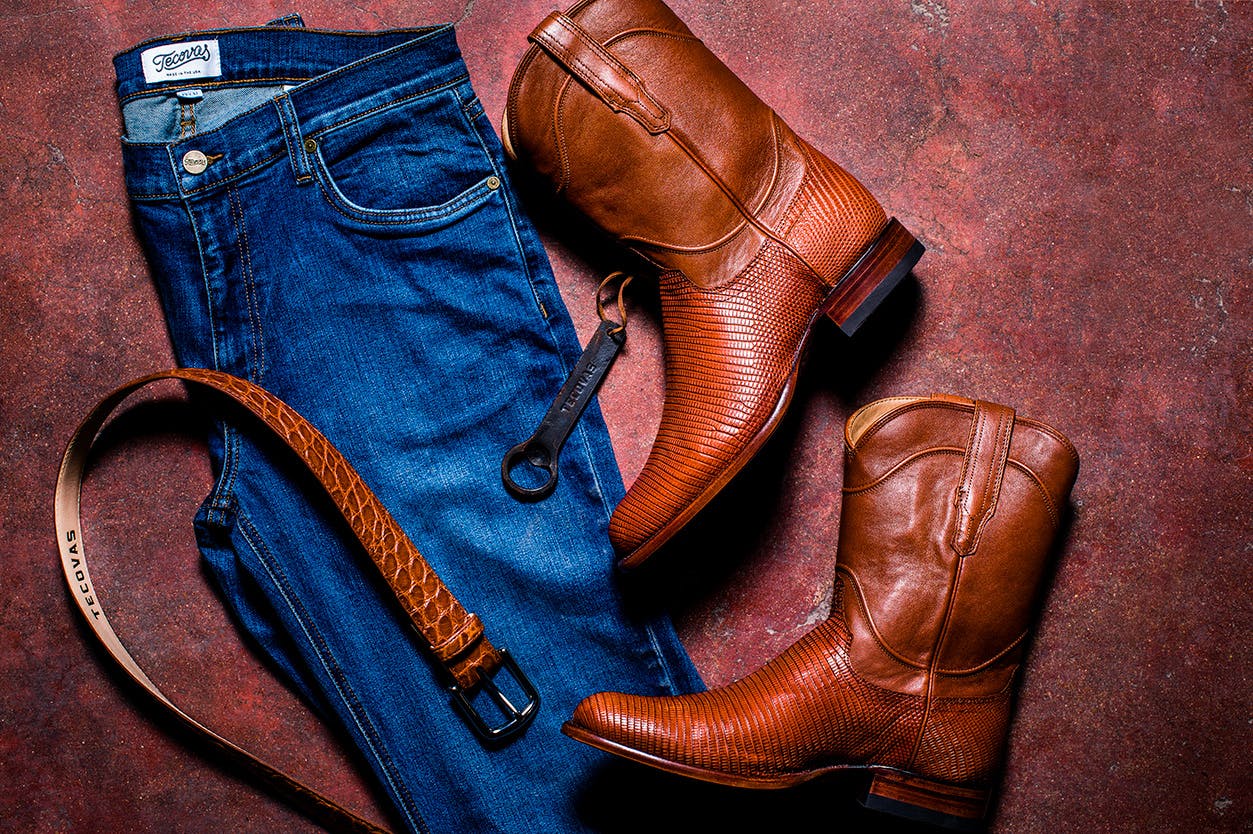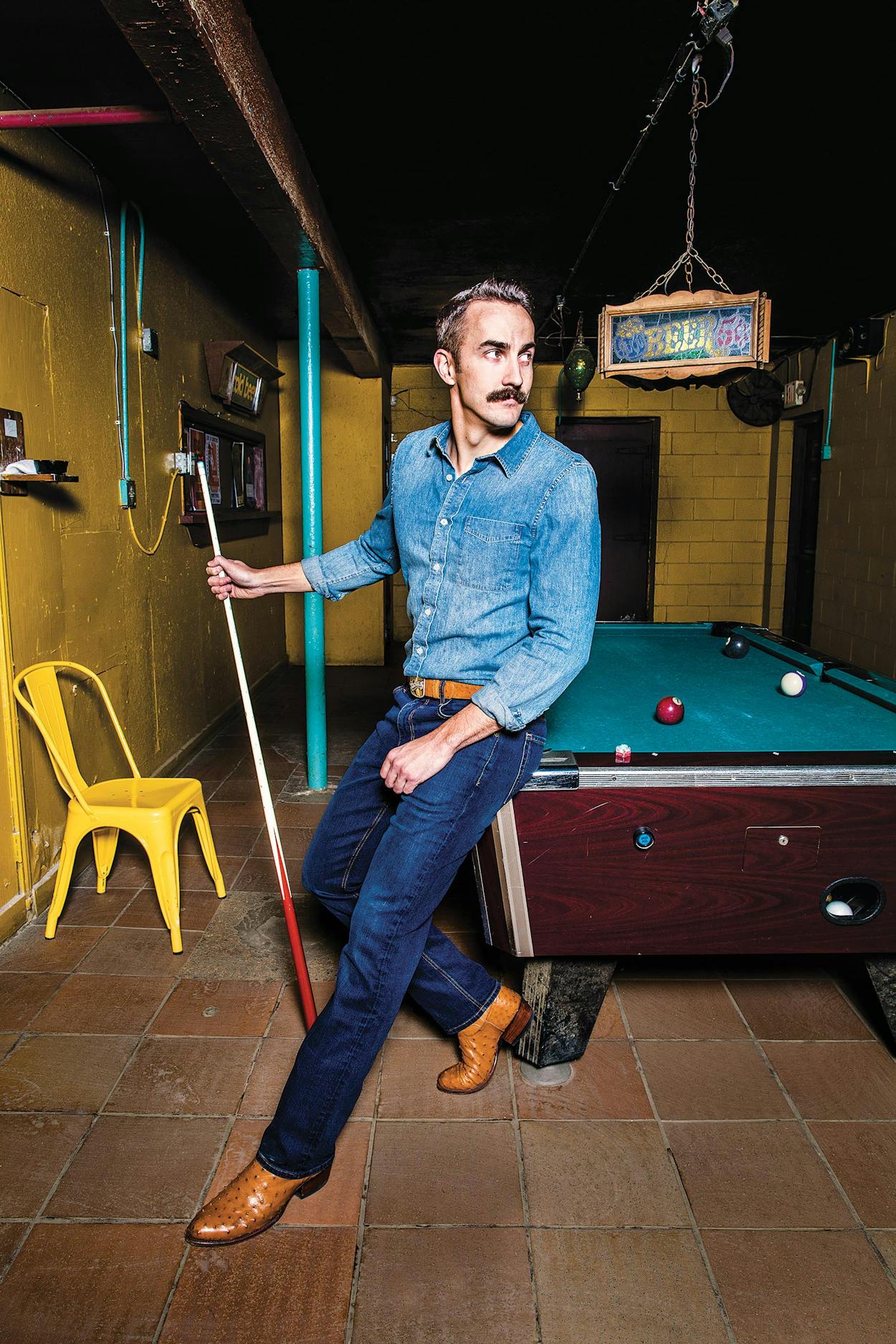Paul Hedrick got the idea to start a Western boot company in, of all places, Greenwich, Connecticut. After growing up in Dallas, he went off to Harvard and, like a lot of smart young people with analytical minds, started a career in management consulting. At 26 he was working for a private-equity firm in Greenwich and traveling across the country to meet with entrepreneurs in all kinds of fields—a candy company in Chicago, a dental implant maker in Denver, a restaurant chain in Dallas. He started getting itchy to create something himself. His boss was sympathetic, so one day in early 2014, they met for a brainstorming session. Hedrick crossed his legs at one point and looked down. He was wearing a pair of $600 ostrich cowboy boots.
“I always loved wearing them in Greenwich, where penny loafers outnumbered cowboy boots infinity to one,” he remembers. He’d been the kind of kid who wore boots and shorts to the grocery store. He’d spent childhood summers riding horses in Montana and Colorado. At Harvard, he took to wearing boots as a sort of badge of Texanness in a foreign land. But the price of his favorite footwear always frustrated him. At the time of his fateful conversation, a whole generation of new brands had risen in New York that reinvented the business model for everything from eyeglasses (Warby Parker) to mattresses (Casper) by cutting out retail-middleman markups and selling wares directly to consumers online at lower prices. In a flash, the concept for Hedrick’s start-up came to him: he would launch such a brand focused on Western boots. And he would do it in Texas, the country’s largest boot market.
A little research convinced him he was on to something. As it turned out, the annual market for Western boots in the U.S. alone was more than $3 billion. Even if Hedrick managed to seize just one percent of that market, he’d have a handsome business. Better yet, nobody in the New York–centric apparel start-up world seemed to be paying any attention to Western wear, and nobody in the traditional boot business seemed to be in a hurry to shake up the nice thing they had going. Hedrick was staring at a wide-open runway.
Not even five years after he had his big idea for what would become Tecovas, he’s telling his story in the concrete shell of what will be the brand’s first brick-and-mortar store, scheduled to open in March. The location: a premium corner on Austin’s South Congress Avenue—two blocks away, somewhat audaciously, from the street’s iconic Allens Boots. Since he first began selling boots, in late 2015, Hedrick has grown the company to more than fifty employees and netted tens of millions of dollars in online sales, meaning he’s already hit that one percent threshold. The Austin location marks the start of the company’s next phase; he plans to open several more stores in Texas this year.

Lean and mustachioed, Hedrick comes off like a Hollywood casting agent’s dream young Texan. Along with a well-worn pair of Tecovas (the Cartwright style, in bourbon calf leather), he’s wearing Tecovas jeans (in the slim fit, which has just enough width at the bottom to slip over a pair of boots) and a Tecovas belt. In addition to several styles of men’s and women’s boots—from basic ropers, starting at $195, to flashier ostrich and lizard numbers —the company began selling leather accessories in 2017 and launched a denim collection last year, with an eye toward becoming a full-service Western brand. Even the more exotic leather boots, like the ones made of caiman belly, have a clean, restrained aesthetic—no square toes, no elaborate contrast stitching. These are boots that could feel at home in the boardroom.
All of this from someone who had no idea how to make boots when he landed in Austin. He reached out to custom bootmakers for advice (he culled a roster from an old Texas Monthly), most of whom rebuffed his requests. The ones who did meet with him had the same advice: go to León, Mexico. “It turns out every brand worth its salt that wants to produce more than a handful of pairs of boots per week has been contracting in León for twenty or thirty years,” Hedrick says. “And it’s not just León; it’s one street in León where there are four major factories. It’s the Western bootmaking capital of the world for handmade high-end boots.” In short, he could make his products with the same materials and craftspeople employed by his well-established competitors.
Rather than raising millions of dollars in venture capital to get off the ground, as most ambitious and tech-enabled apparel entrepreneurs do, Hedrick emptied a 401(k) and ran up his credit card. He sold his car and bought a twenty-year-old Toyota 4Runner, which he used to ferry his first shipment of boots around to trunk shows. He made more than $100,000 in sales before he hired his first employee, and the company was making a profit within about a year—again, a rarity in the world of start-ups.
All of which speaks to the power of Hedrick’s idea. Not only had he managed to shave the price of boots, he had simplified the shopping process. Your typical boot emporium can be dizzying, the aisles stocked chockablock, like grocery shelves, with every style and price point. Tecovas demystified it all online by streamlining the selection, giving clear explanations of the differences between styles, and offering transparency about the production and pricing. Similarly, the Tecovas stores will function more like high-end showrooms (think lots of comfy seating and open space, with the inventory in the back). This setup allows shoppers to sip beer and learn about what they’re looking at while salespeople do the fetching. It’s the kind of experience you might get at a dedicated Lucchese store but one that’s an exception in the industry.

Rockin’ the Name
Tecovas is a Palo Duro Canyon geologic formation in shades of lavender and gold. “It’s been there for hundreds of millions of years,” says Hedrick, who loved paleontology as a boy. “There are a lot of dinosaur fossils there.”
You can probably guess the look and feel of the Austin boutique—sort of West Texas chic, with rich leather seating offset by raw, industrial surrounds. The two floors of office space upstairs will become the new Tecovas headquarters.
As Tecovas has vaulted to popularity, Hedrick last year decided to give his brand an extra boost: he raised nearly $25 million, led by a founder of Warby Parker; he had previously raised $4.4 million from investors including the cofounders of both Yeti and Bonobos menswear. That’s essentially a greatest-hits list of newfangled lifestyle brands from the past decade, and the extra cash and counsel are fueling the move into brick-and-mortars.
For now, that expansion is focused on Texas, but the online store does a lot of business across the rest of the country. There are customers in all fifty states, including, Hedrick notes, Connecticut.
This article originally appeared in the March 2019 issue of Texas Monthly with the headline “A Bootmaker Hits His Stride.” Subscribe today.
- More About:
- Style & Design
- Business
- Cowboy Boots
- Austin









